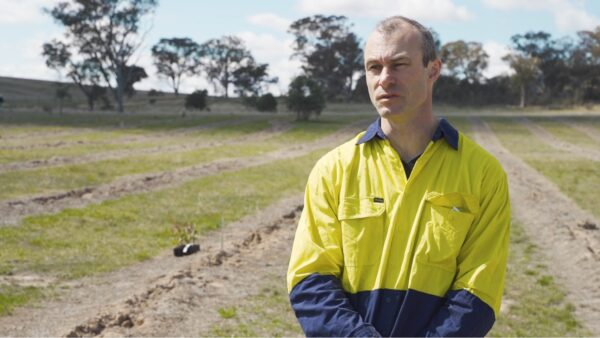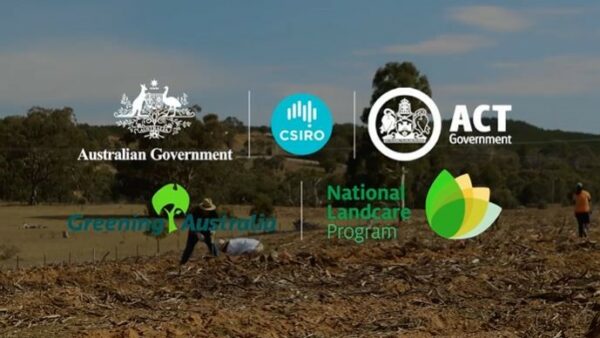Ginninderra trials helping Blakely’s Red Gum beat dieback
CSIRO is partnering with the ACT Government and Greening Australia to conduct provenance trials at Ginninderra to ensure the long-term survival of the iconic Blakely’s Red Gum.
One of the iconic eucalypt species of the open grassy woodlands of south eastern Australia is the Blakely’s Red Gum (Eucalyptus blakelyi). Found mainly in the tablelands areas of NSW and ACT, it grows to a height of 20-25 metres and features smooth white bark shed in large, irregular flakes leaving grey, white and red‑brown patches and with broad, grey-green leaves.
In the ACT and surrounding region, Blakely’s Red Gum trees are suffering a poorly understood condition known as dieback. This damaging process kills large, mature trees and can be spotted in the landscape as trees begin to lose their leaves and develop dead branches.
A major cause of dieback is attack from sap-sucking insects called psyllids. These are naturally occurring native insects and the damage they cause appears to be getting worse. Climate change and altered land management practices such as pasture improvement are suspected to be major contributors.
All this presents a challenge because, together with Yellow Box and White Box, Blakely’s Red Gum forms an important part of box-gum grassy woodlands, an endangered ecological community. This species also provides habitat for insects, bats and birds and flowers in winter, providing food during the cooler months.
Partnering with ACT government to find solutions
CSIRO is partnering with the ACT Government and Greening Australia to conduct trials supporting the long-term survival of this iconic species. CSIRO’s ecologists and scientists from Australian Tree Seed Centre and the ACT Government are carrying out these ‘provenance’ trials at CSIRO Ginninderra among three other sites.
“These trials will play an important part in gaining a better understanding of what is causing dieback of Blakely’s Redgum here in the ACT,” according to Luke Bulkeley, a Program Manager with the ACT Parks and Conservation Service.
“If we find resistant provenances or individual trees, we may be able to use these as the basis for resilient planting stock for future plantings.”
Provenance trials will compare the condition and survivability of Blakely’s Red Gum trees grown from seed collected from different places, according to Director of CSIRO’s Australian Tree Seed Centre, David Bush.
“In this trial at Ginninderra we’ve got trees from as far as Queensland and Victoria and of course we’ve got provenances from here in the ACT as well,” David says.
“The trials will show whether trees sourced from different locations vary in their growth, adaptation and resistance to insect attack.”
Seed for the trials has been sourced through the Australian Tree Seed Centre (ATSC) one of the National Research Collections managed by CSIRO. For more than 50 years, ATSC has been collecting, researching and supplying quality, fully documented tree seed to both domestic and overseas customers.
In the future, successful provenances of Blakely’s Red Gum could be planted in the ACT to help conserve this species and the woodlands it forms.
Watch the video to find out more and see footage of these beautiful trees.
These provenance trials are supported by ACT NRM, through funding from the Australian Government’s National Landcare Program.
 |
David Bush, Director of the Australian Tree Seed Centre, CSIRO at the Ginninderra provenance trial. |
 |
Blakely’s Red Gum seedlings at Ginninderra include plants grown from seed collected from across Australia. |
 |
|
